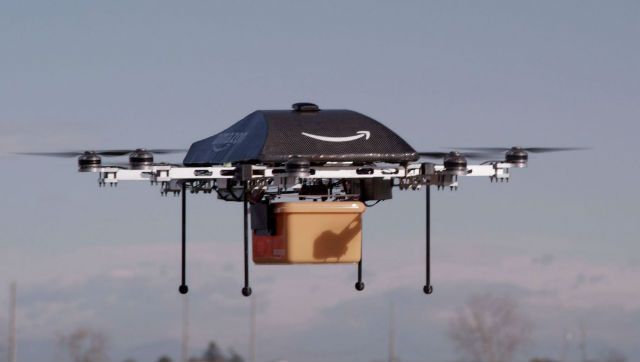A delay in the US Federal Aviation Administration granting Amazon permission to test an unmanned air vehicle has rendered the UAV “obsolete”, the online retailer says, as it continues to develop advanced models of the variant belatedly authorised by the administration.
The company has been lobbying for the FAA to authorise testing of its UAVs since CEO Jeff Bezos unveiled Amazon’s Prime Air vision in December 2013, which resulted in an experimental airworthiness certification being granted by the administration on 19 March 2015.
However, the permission was granted for a particular UAV, which Paul Misener, vice-president for global public policy at the company, told a US Senate subcommittee on aviation operations safety and security is now the wrong model, as the UAV that is currently being tested outside of the USA is more advanced.
“We are grateful to the FAA for granting us permission to conduct UAS [unmanned air systems] testing outdoors in the United States,” Misener said in his testimony. “However, the permission the FAA granted is more restrictive than are the rules and approvals by which we conduct outdoor testing in the UK and elsewhere.
“The good news is that, while the FAA was considering our applications for testing, we innovated so rapidly that the UAS approved last week by the FAA has become obsolete. We don’t test it anymore.”
Soon after the certification was granted, Amazon asked the FAA for authorisation to fly “one of these advanced UAS in the United States”, and it now hopes that this will be granted quickly, Misener says.

Rex Features
The FAA certificate allows Amazon to carry out research and development and crew training at altitudes of 400ft and below, during daylight hours and in visual meteorological conditions.
Furthermore, in line with the administration’s experimental airworthiness certificate guidelines, Amazon is mandated to report back to the administration with its findings on a monthly basis.
This includes informing the FAA on the number of flights conducted, pilot duty time per flight, unusual hardware and software malfunctions, deviations from air traffic controllers’ instructions and any unintended communications link losses.
The pilot of the UAV must also have a private pilot’s certificate and current medical certification – usually part of manned aviation guidelines.
This award follows the FAA's release in February of a proposed set of guidelines that would authorise the use of small UAS for commercial operations in US airspace at up to 500ft during daylight hours – so long as they remain within visual line of sight of operators who have passed an aeronautical awareness test.
The FAA then announced in March that it has established an interim policy to speed up the issuing of airspace authorisations for specific commercial UAVs that qualify under Section 333 in the FAA’s Modernization and Reform Act of 2012. This clause allows exemptions from full certification regulations to be granted for UAV operations.
This means the FAA will grant a Certificate of Waiver or Authorization (COA) to any UAV operator with a Section 333 exemption for flights at or below 200ft of aircraft weighing less than 55lb, in daylight, within line of sight and at certain distances away from airports and heliports.
This “blanket” COA for operations below 200ft differs from previous rules mandating that an operator had to apply for and receive a COA for specific areas of operations. This, the FAA says, could take up to 60 days, so the new rule will speed up the process.
Those operators that already hold an exemption will automatically receive the new blanket COA, and anyone wishing to fly outside of these parameters will still be required to obtain a COA specific to the area of operation.
“The new policy helps bridge the gap between the past process, which evaluated every UAS operation individually, and future operations after we publish a final version of the proposed small UAS rule,” the FAA says.
Source: FlightGlobal.com






















